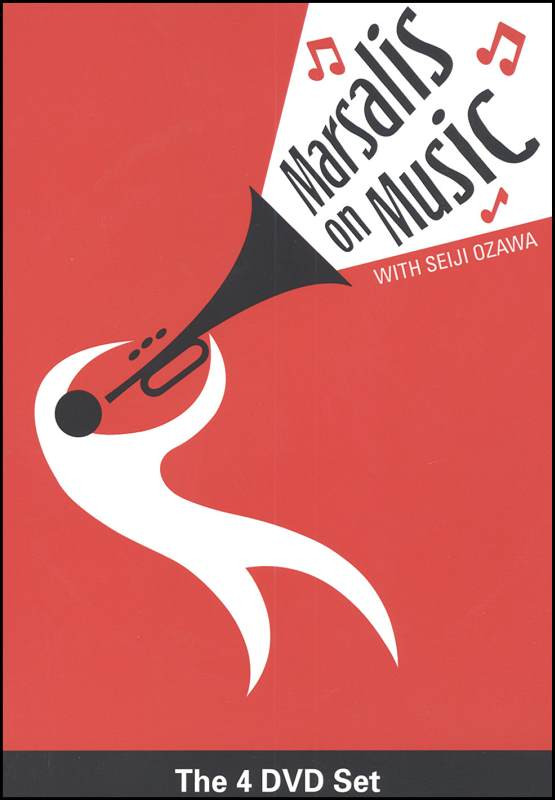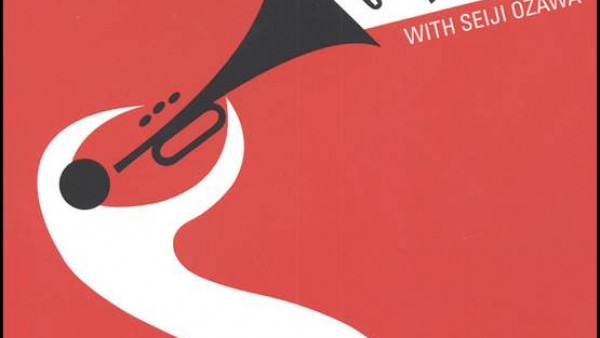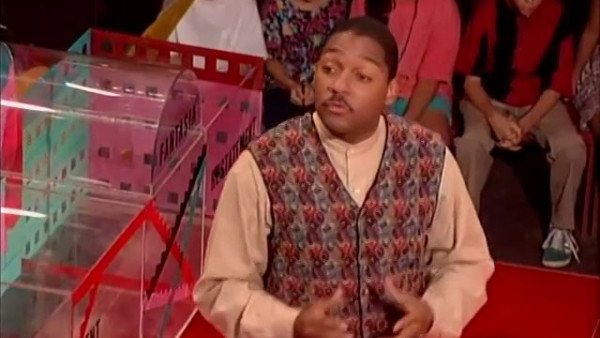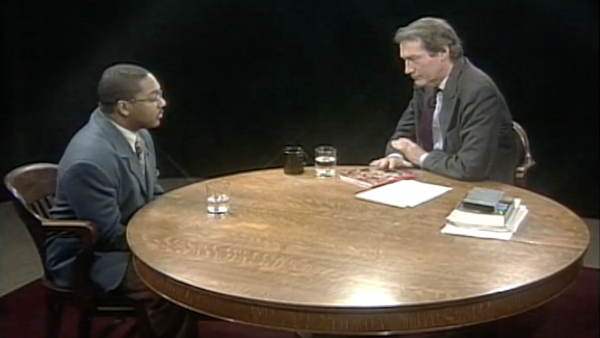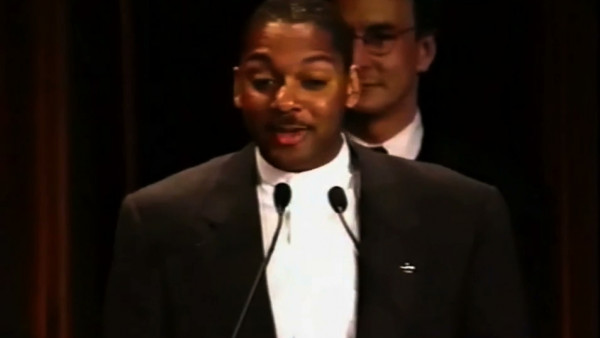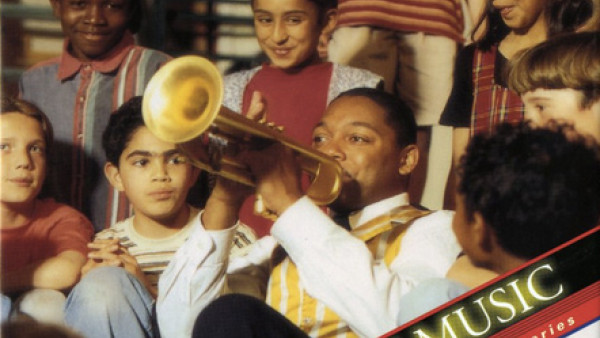Wynton Marsalis, Top Tutor
It’s precisely because trumpet virtuoso Wynton Marsalis is equally comfortable in classical music and jazz — he studied at both the Juilliard and Blakey schools — that he’s so adept hosting “Marsalis on Music,” a four-part music appreciation program aimed at young listeners. It airs on Channel 26 tonight at 8 and the next three Mondays.
Clearly inspired by Leonard Bernstein’s “Young People’s Concerts,” the series looks to demystify classical music and jazz using tools familiar to Bernstein (with Seiji Ozawa standing in with the Tanglewood Music Center Orchestra, for instance), as well as state-of-the-art video and computer technology.
The programs were shot in the wood-paneled rehearsal barn at Tanglewood, the summer home of the Boston Symphony Orchestra, before an audience of 9- to 12-year-olds. Marsalis’s aim is to guide them to a better understanding of the structure, artistry and beauty of both jazz and classical music through a series of musical dialogues — Marsalis’s own jazz band shares the stage with the Tanglewood orchestra — and genial monologues by the 33-year-old trumpeter. His aim is true.
There’s tradition at work here: Marsalis has clearly appropriated a charming, common-sense approach to education from his music-teacher father, Ellis, and he has refined it over the past decade at the master classes he’s held nationwide at high schools and at the Young People series at New York’s Lincoln Center, where he directs the jazz programs. Marsalis has learned to temper his fierce devotion to music with charm and humor, thus straddling the barrier that often separates education and entertainment.
Tonight’s program, “Why Toes Tap: Marsalis on Rhythm,” is the best of the four, perhaps because its basic premise — to show how the fundamental elements of music are shared by different musical styles — makes use of recognizable models, Tchaikovsky’s “Nutcracker” Suite and the decidedly American version arranged by Duke Ellington and Billy Strayhorn. There are illustrations of such terms as measure, tempo and ground rhythm (“the blue-collar workers of music — overworked and underappreciated,” Marsalis notes) and the differing roles of percussion in classical and jazz.
Without demeaning melody, Marsalis calls rhythm the most basic element of music and life. And to break matters down, he’s not above using a basketball, its varied dribbles reflecting rhythmic imagination and style. At show’s end, both Ozawa’s and Marsalis’s ensembles perform their respective “Nutcracker” music, but it’s not a battle of the bands: After all, this series is about the duality and commonality of musical genres; it’s about distinctions, not differences.
The second program, “Listening for Clues: Marsalis on Form,” is valuable because the host recalls his own youthful disdain for listening to extended works, then shows how such music “can unfold like a good story if you pay attention to characters and themes.” He explains the sonata form, the 32-bar song (“sonata form in miniature”) and 12-bar blues, and such elements as theme-and-variations and call-and-response. Here and in a subsequent program, Marsalis occasionally uses architectural models to illustrate his points. Unfortunately, the producers sometimes cut to mostly modern works of art or flashy computer graphics, as if Marsalis needs some help on the mood front. He doesn’t.
The third program, “Sousa to Satchmo: Marsalis on the Jazz Band,” charts the emergence of the brass-dominated ensemble, from John Philip Sousa’s melding of European tradition with “the new American optimism” to the multicultural swirl of New Orleans that gave birth to jazz. The music is quintessentially American — Sousa, Ives, Joplin, Armstrong — performed by the Tanglewood Wind Band and the Liberty Brass Band from New Orleans. In one curious moment, Marsalis notes that Louis Armstrong’s improvisations on “Cornet Chop Suey” are “so logical, they sound written.” When Marsalis plays them as written, they once again sound improvised. The show ends rousingly with a joint performance of Sousa’s “Manhattan Beach March.”
The final program, “Tackling the Monster: Marsalis on Practice,” operates on a smaller scale as Marsalis and cellist Yo-Yo Ma discuss discipline, dedication, methodologies and practice fundamentals with a young trumpeter and several young cellists. The series ends with a lovely low-key collaboration between the two on Ellington’s “Mood Indigo.”
With its multilevel, kid-draped set, elaborate lighting and fluid camera work, “Marsalis on Music” is always fun to watch, and the host has clearly met his goal to engage and illuminate. A companion book (with CD) has just been published by W.W. Norton, and home video versions have been released by Sony Classical Film & Video. Marsalis can also be heard hosting “Making the Music,” a 26-part jazz series airing on National Public Radio.
by Richard Harrington
Source: The Washington Post

